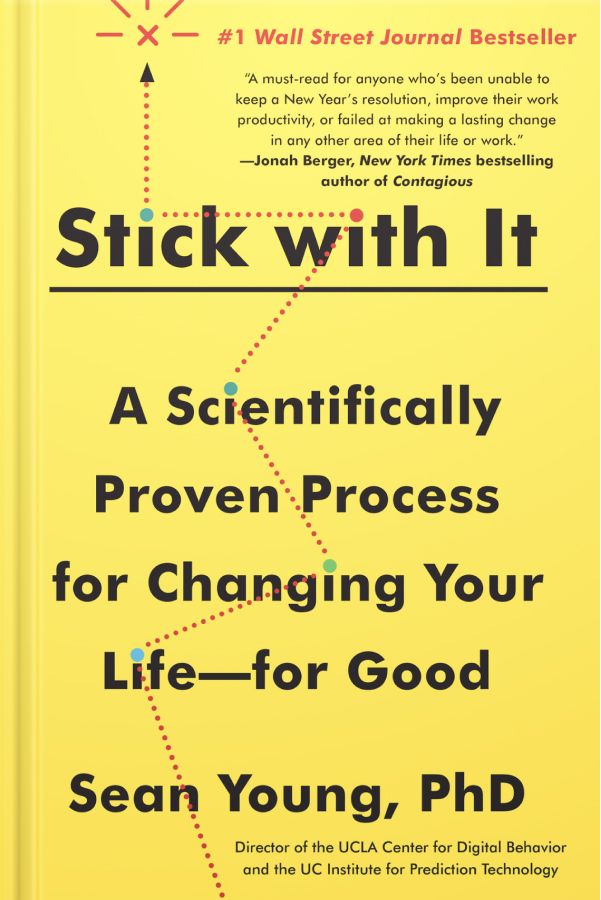
Stick with It by Sean Young
In "Stick With IT" by Sean Young, the author provides profound insights on the science of behavioural change. Young explores more than just breaking bad habits; he emphasizes changing processes, harnessing the power of our mind, and using small steps, community support, personal significance, convenience, neuro hacks, captivating rewards, and habit entrenchment. Let's dive into these takeaways.
1. Beyond Habit Change
Young clarifies that behavioural change extends beyond just modifying habits.
He advocates for a broader perspective on change, encompassing the processes and systems we utilize in our daily lives, and not merely focusing on singular bad habits.
2. Process Over Personality
While conventional wisdom suggests personal transformation, Young presents a more manageable alternative—changing our processes.
This perspective acknowledges that effective change often happens incrementally and systematically, rather than through sudden, sweeping personal transformations.
3. Mindset and Actions
While acknowledging the crucial role of mindset in behavioural change, Young provocatively suggests that our actions can shape our mindset rather than vice versa.
This emphasizes the importance of actively pursuing change, not just thinking about it.
4. The Power of Stepladders
In planning change, Young advises against focusing solely on grand visions and goals.
Instead, he suggests breaking down these larger goals into smaller, more manageable steps or "stepladders," making the process of change less daunting and more achievable.
5. The Role of Community
Community is integral to successful change, as demonstrated by organizations like CrossFit, Weightwatchers, and Alcoholics Anonymous.
For a community to effectively foster change, it needs to provide trust, inclusion, shared purpose, rewards, and a social element.
6. The Primacy of Importance
Change is unlikely to happen unless the change is deemed "important."
According to Young, the perception of importance precedes and fuels motivation, highlighting the need for personal significance in any change endeavor.
7. The Ease of Change
To enhance the likelihood of successful change, Young recommends making things as easy as possible.
This means structuring change in a convenient, self-reinforcing manner that reduces resistance and encourages adaptation.
8. Neuro Hacks
Young introduces the concept of "neuro hacks," strategies that trick our brain into accepting a new neural path and overcoming resistance to new methods and uncertainties.
These hacks provide a shortcut to effective behavioural change.
9. The Lure of Rewards
Intrinsic and extrinsic rewards can make behavioural change more captivating, according to Young.
Such rewards trigger a positive response in our minds, making the new behaviour more appealing and sustainable.
10. Engraining Habits
The importance of engraining new behaviours cannot be overstated. Simple tools like calendar chains and routinization can help reinforce new habits, fostering a lasting ability to change.
11. The SCIENCE Method
Finally, Young presents his seven-step SCIENCE method for creating lasting behavioural change:
- Stepladders
- Community
- Importance
- Easy
- Neuro hacks
- Captivating
- Entrainment
This acronym encapsulates the key principles presented throughout the book.
